| << Chapter < Page | Chapter >> Page > |
When a pulse moves through a medium, there are two different motions: the motion of the particles of the medium and the motion of the pulse. These two motions are at right angles to each other when the pulse is transverse. Each motion will be discussed.
Consider the situation shown in [link] . The dot represents one particle of the medium. We see that as the pulse moves to the right the particle only moves up and down.
First we consider the motion of a particle of the medium when a pulse moves through the medium. For the explanation we will zoom into the medium so that we are looking at the atoms of the medium. These atoms are connected to each other as shown in [link] .

When a pulse moves through the medium, the particles in the medium only move up and down. We can see this in [link] which shows the motion of a single particle as a pulse moves through the medium.
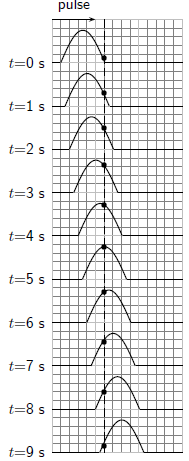
If you consider the motion of the particle as a function of time, you can draw a graph of position vs. time and velocity vs. time.
| time (s) | 0 | 1 | 2 | 3 | 4 | 5 | 6 | 7 | 8 | 9 |
| position (cm) |
The position vs. time graph for a particle in a medium when a pulse passes through the medium is shown in [link]

| time (s) | 0 | 1 | 2 | 3 | 4 | 5 | 6 | 7 | 8 | 9 |
| velocity (cm.s ) |
The velocity vs. time graph far a particle in a medium when a pulse passes through the medium is shown in [link] .
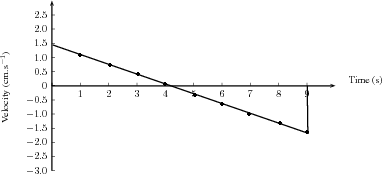
The motion of the pulse is much simpler than the motion of a particle in the medium.
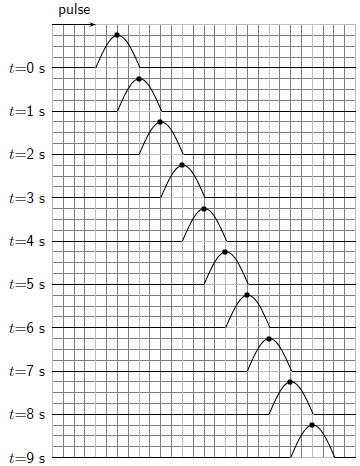
Given the series of snapshots of a transverse pulse moving through a medium, depicted in [link] , do the following:
[link] shows the motion of a pulse through a medium and a dot to indicate the same position on the pulse. If we follow the dot, we can draw a graph of position vs time for a pulse. At the dot is at . At the dot is away from its original postion. At the dot is away from its original postion, and so on.
| time (s) | 0 | 1 | 2 | 3 | 4 | 5 | 6 | 7 | 8 | 9 |
| position (cm) | 0 | 1 | 2 | 3 | 4 | 5 | 6 | 7 | 8 | 9 |
| velocity (cm.s ) | 1 | 1 | 1 | 1 | 1 | 1 | 1 | 1 | 1 | 1 |
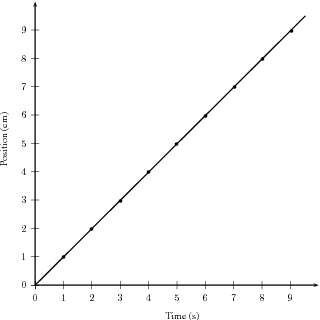
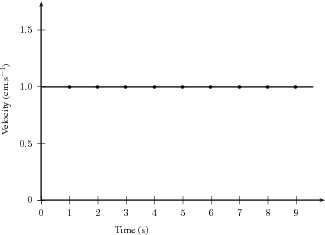
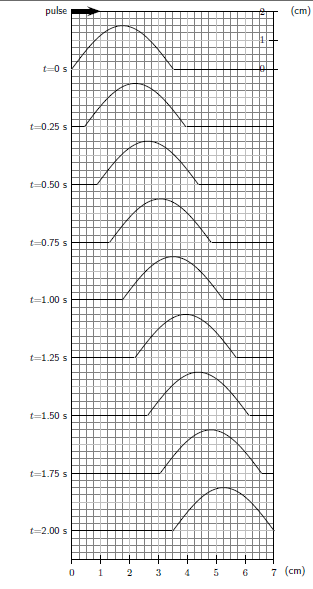
| time (s) | 0,00 | 0,25 | 0,50 | 0,75 | 1,00 | 1,25 | 1,50 | 1,75 | 2,00 |
| position (mm) | |||||||||
| velocity (mm.s ) |

Notification Switch
Would you like to follow the 'Siyavula textbooks: grade 10 physical science' conversation and receive update notifications?